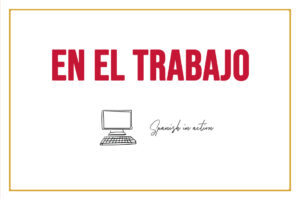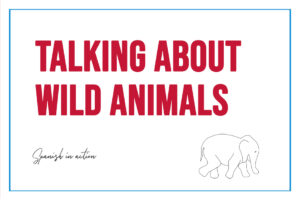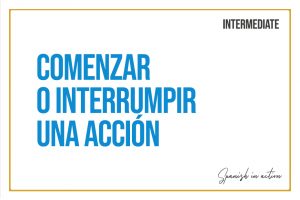Un ramo de rosas rosadas le regaló Ramón a su prometida Rita
(A bouquet of pink roses Ramón gave to his fiancée Rita)
Were you able to read the title of this article fluently? If you did, then this article is not for you. But if not, then you should not only read it, you have to take time to train your language, and achieve the challenge with the steps that we will give you.
Yes! We have indeed said that pronunciation is the easiest thing Spanish has when you are going to learn as a foreign language. It is a phonetic language and therefore there is no need to guess how each letter is pronounced when reading it. It is also not necessary to juggle with the language because the phonetic system is not so long, and it does not have double articulating points. There is no forced nasality. The syllable tends to be open, which means that it is mostly consonant and vowel.
Yes, pronunciation is easy.
Even with its ease, some sounds produce stress depending on the mother tongue of the speaker. Let’s focus here on English speakers and the R sound when it is multiple.
More than once, in class, laughter masks that little articulatory shame that a student feels when they cannot make an rrrrr sound (in phonetics, we call it vibrant multiple) as we native Spanish speakers do. The student even thinks that it is a real articulatory incapacity. That in some way, he is disabled for its production.
No, it’s not like that. It is the sound or articulation base depends on the mother tongue. What is the articulatory base? It is the configuration of a structure that adjusts to the needs of your speech system.
And how do you think you created that base? It was not conscious at all, it was created with your daily speech production. It is created through the internalized habits in the organs of the articulation of each individual.
Technically it is «Arrangement of all parts of the speech mechanism and their joint action aimed at making a natural emission in a given language» (Gil, J 2007).
It has to do with: the tension of the articulating organs; the tongue between them; the position of the larynx; the location of the central resonance; labialization (lip shapes); activities of the apex of the tongue; mandibular movements marked; and the degree of nasality.
But notice, if your sound base has never registered a type of sound, it will not be natural to produce it. It is like a blind man who, if he has never seen a color, does not know how to differentiate one from another. So that is the reason why it is not natural for an Anglo to produce a vibrant multiple.
For anative English speaker, the pronunciation of the R represents a double challenge. He must learn the different the simple R from the multiple RRR. In English exists just one (the simple one). Also, he must learn how to pronunciate each one. The multiple RRR is more difficult.
The Spanish R is a sonorous consonant sound . It needs vibration of the vocal cords. It is alveolar because the tip of the tongue should touch the palate, just behind the teeth. It is vibrant because it needs more than one repetition.
The English R is a sonorous consonant sound much darker and delayed. It is post-alveolar or central, in the palte center, depending on the context of the word. It is also fricative, it means that is not dry. The touch of the tongue with the palate is not total, leaving a space for the air come out.
The are for sure different.
What will you have to make a better R sound?
- Identify the sound made.
- Train your articulatory organs for the demands of sound.
- Record the sound in each articulatory organ.
- Orchestrate the articulatory organs for the production of sound.
- Record the sound in different phonic contexts.
- Identify
Loud sound (multiple vibrating) sounds when you write the word with R / r (single) at the beginning, also after l, n y s (single r), and between two vowels (written with rr).
The simple vibrating soft sound sounds (simple means a single vibration or touch between the tip of the tongue and the alveoli of the palate) when you write the word with r in different contexts from those mentioned above.
You must understand that communication is often not impeded even when the vibrant multiple does not occur. Context can help you deduce the meaning you want to convey and repair faulty pronunciation. However, there are two alerts that I want to make you. The first is that there are even Spanish words that only differentiate their meaning precisely by producing multiple vibrations. You will see the cases below. And the second is that the assimilation of the naturalness of speech is very limited by this trait. So the more you want to look natural, the more you have to work on it.
Ready. I already explained why it is difficult for you to produce that rrrr (multiple vibrating) and what you have to do. But now I am going to tell you how.
Let’s do it in 4 simultaneous steps. You don’t need to do one step first for a while and then the others. Do everything at once daily for at least fifteen days, and now. Remember, is training. You go to an articulation marathon, and you need to train.
2. Strengthens and tightens the tongue
You will circle your inner cheek with your taut tongue. Make sure the tongue is the one taht is pressing with the inner cheek. First on one side (right cheek) and then on the other. About 10 or 15 circles each time, and as many times as you want throughout the day.
3. Registers the phoneme in diverse articulatory contexts
You will make the phoneme combinations from the following lists. In them, there are complex combinations that include the phoneme you want to enhance, the rrrr. As you will see, the last one is the most difficult for you because the phoneme has no support in another, the tongue does not have a cane to help you walk. Well, that’s the way. First, support the sound and gradually leave it alone.
| FLABRA | FLEBRA | FLIBRA | FLOBRA | FLUBRA |
| FLABRE | FLEBRE | FLIBRE | FLOBRE | FLUBRE |
| FLABRI | FLEBRI | FLIBRI | FLOBRI | FLUBRI |
| FLABRO | FLEBRO | FLIBRO | FLOBRO | FLUBRO |
| FLABRU | FLEBRU | FLIBRU | FLOBRU | FLUBRU |
| PLABRA | PLEBRA | PLIBRA | PLOBRA | PLUBRA |
| PALABRE | PLEBRE | PLIBRE | PLOBRE | PLUBRE |
| PLABRI | PLEBRI | PLIBRI | PLOBRI | PLUBRI |
| PLABRO | PLEBRO | PLIBRO | PLOBRO | PLUBRO |
| PLABRU | PLEBRU | PLIBRU | PLOBRU | PLUBRU |
| FLAGRACLA | FLEGRACLE | FLIGRACLI | FLOGRACLO | FLUGRACLU |
| FLAGRECLA | FLEGRECLE | FLIGRECLI | FLOGRECLO | FLUGRECLU |
| FLAGRICLA | FLEGRICLE | FLIGRICLI | FLOGRICLO | FLUGRICLU |
| FLAGROCLA | FLEGROCLE | FLIGROCLI | FLOGROCLO | FLUGROCLU |
| FLAGRUCLA | FLEGRUCLE | FLIGRUCLI | FLOGRUCLO | FLUGRUCLU |
| GRAPLACLA | GRAPLECLA | GRAPLICLA | GRAPLOCLA | GRAPLUCLA |
| GREPLACLE | GREPLECLE | GREPLICLE | GREPLOCLE | GREPLUCLE |
| GRIPLACLI | GRIPLECLI | GRIPLICLI | GRIPLOCLI | GRIPLUCLI |
| GROPLACLO | GROPLECLO | GROPLICLO | GROPLOCLO | GROPLUCLO |
| GRUPLACLU | GRUPLECLU | GRUPLICLU | GRUPLOCLU | GRUPLUCLU |
| RLABRA | RLEBRA | RLIBRA | RLOBRA | RLUBRA |
| RLABRE | RLEBRE | RLIBRE | RLOBRE | RLUBRE |
| RLABRI | RLEBRI | RLIBRI | RLOBRI | RLUBRI |
| RLABRO | RLEBRO | RLIBRO | RLOBRO | RLUBRO |
| RLABRU | RLEBRU | RLIBRU | RLOBRU | RLUBRU |
Notice, these words have articulatory support for the production of the vibrating multiple:
Enrique / Enrarecido / Barny / Enroscado / Subrayar / Israelí.
Next words do not have it:
Resurrección / Correa / Derrite / Ocurrir / Ferroviario.
How are you doing the exercise
4. Distinguish vibrant single from multiple, including their meanings
Ahora-ahorra / Boro-borro / Careta-carreta / Caro-carro / Cero-cerro / Coro-corro / Curo-curro / Hiero-hierro / Jara-jarra / Mira-mirra / Moro-morro / Para-parra / Pero-perro / Quería-querría
5. Expresses ideas with complex pronunciation
You will read sentences and memorize tongue twisters with your mouth tight and open. Only those tongue twisters that contain the phonemes you want to enhance, in this case the rrrr. I attached some sentences and a tongue twister.
La rana se ríe
Me regaló un ramo
La rosa es roja
El carrusel me da risa
El remo está roto
Rita revisa la tarea
Yo repaso un rato
Rico tiene una roca
El rubí es rosado
Ramiro mira el rebaño
Parra tenía una perra y Guerra tenía una porra, pero la perra de Parra rompió la porra de Guerra, oiga usted señor Guerra ¿por qué le ha pegado con la porra a la perra de Parra? Porque si la perra de Parra no hubiera roto la porra de Guerra, Guerra no le hubiera pegado con la porra a la perra de Parra.
Ready. By now your rrrrr should be taut, precise and as long as you want.
If you still do not have mastery of the phoneme, and your tongue relaxes and tires and loosens from the point of the palate at your whim, do not worry, continue your training. You will see how soon you will make the jump to the goal.
Read this article in Spanish and put your Spanish in Action now!



